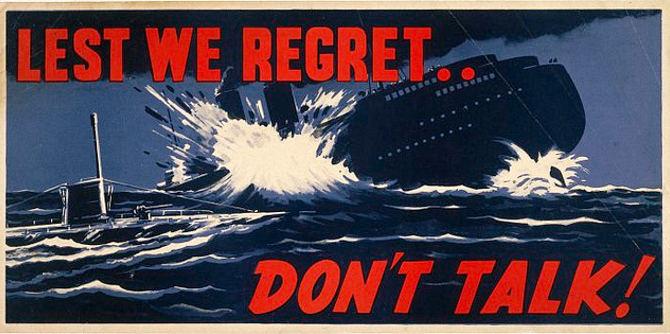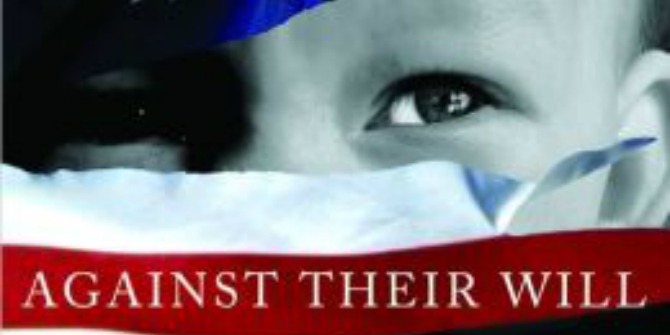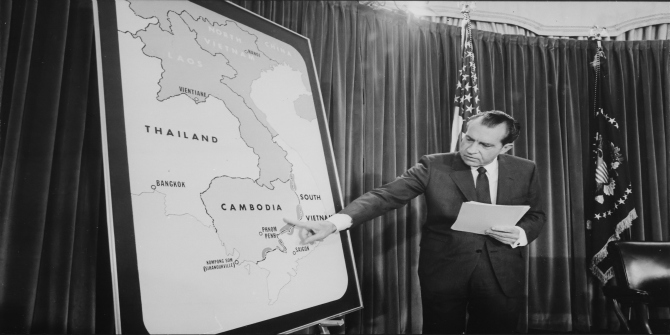Born into slavery in rural Louisiana, Rose Herera was bought and sold several times before being purchased by the De Hart family of New Orleans. Still a slave, she married and had children, who also became the property of the De Harts. But after Union forces captured New Orleans in 1862 during the American Civil War, Herera’s owners fled to Havana, taking three of her small children with them. Beyond Freedom’s Reach is the true story of one woman’s quest to rescue her children from bondage. This book adds a human touch to an emotional subject, writes Michael Warren.
 Beyond Freedom’s Reach: A Kidnapping in the Twilight of Slavery. Adam Rothman. Harvard University Press. February 2015.
Beyond Freedom’s Reach: A Kidnapping in the Twilight of Slavery. Adam Rothman. Harvard University Press. February 2015.
Historians frequently focus on the power brokers and the decisive turning points throughout the ages. The ending of American slavery is no exception, with numerous studies on the clash of armies and the role of Abraham Lincoln to name a few recurring points of attention. In an attempt to do the opposite, Adam Rothman has charted a history focused on individual experiences in Beyond Freedom’s Reach: A Kidnapping in the Twilight of Slavery. An Associate Professor of History at Georgetown University specialising on 19th Century American history, Rothman’s latest publication is a micro-history of the life of freed slave Rose Herera and her bid to reclaim her kidnapped children from her former owners.
The reader opens the book to find a ”Cast of Characters” at the beginning, which is unusual an historical work. It is in this personal and often engrossingly-told style that Rothman describes Rose Herera’s plight. Herera was born into bondage in nineteenth century Point Coupee, Louisiana and was sold to another owner with her family (three children, who by law cannot be separated from their mother) in New Orleans. Her treatment as merely an object of transactions was to become a staple of Rose’s life. Eventually, Herera and her family ended up in the hands of the James and Mary De Hart. Shortly thereafter, the American Civil War erupted and the havoc was brought to the country. This middle segment of the book maps the cosmopolitan hubbub of New Orleans and the complex arrangements of the people living there at the time. Rothman’s chosen subjects are able to highlight these issues: Rose Herera’s husband was a free man, yet she and her children were slaves; whilst James De Hart was an immigrant from the Netherlands whose feelings of displacement led him to find a culture to assimilate into – he chose the community of medical professionals.
In 1862, New Orleans was captured by Union forces and it became harder for masters of slaves to impose their will – the slave driven hierarchy was beginning to disintegrate. In fear of losing property in the impending emancipation, Mary De Hart kidnapped Herera’s children and whisked them to Havana where an exodus of Confederates and James De Hart fled. Prior to the kidnapping, Herera had an altercation with Mary De Hart’s aunt, which led to Herera being charged with assault and thrown into prison. De Hart tried to persuade Herera to travel to Havana, but failed as Herera wished to remain close to her mother. The rest of the book follows the legal wrangling to retrieve Herera’s children from the De Hart’s clutches, which came to a successful conclusion in 1866.
 African American men and women hoe and plow the earth while others cut piles of sweet potatoes at a plantation in the American South. One man sits in a horse-drawn cart.
African American men and women hoe and plow the earth while others cut piles of sweet potatoes at a plantation in the American South. One man sits in a horse-drawn cart.
The book’s major novelty is its focus on individual personal suffering as opposed to a typical slavery history which is concerned with the quantity of suffering, as Rothman himself says, “Historians have tended to write about slavery in the aggregate rather than to delve deeply into the experiences of particular enslaved people”. However, it is questionable whether the book is able to adequately substantiate such a noble methodology. Frequently, there is simply not enough evidence to tell the story of its main protagonists: thus Rothman is sometimes hostage to imaginative conjecture such as guessing how Rose and George Herera’s courtship began (“They might have jostled past each other on the street…”) or educated guesses like “James De Hart could have been” one of the passengers on a newly arrived ship in Cuba. Where Rothman works best to fill the gaps of the actors, is when he utilises factual accounts. To shed light on the emotions and possessiveness of Mary De Hart, the diary of Ann Penrose (a slave owner similar to Mary De Harts) is usefully exploited by Rothman. In 1862, Penrose’s slave Jane Thomson was intent on rescuing her two daughters from the Penrose household (Thomson feared Penrose was arranging to have the children shipped away), causing Penrose to fume in her diary that Thomson was “coming up to steal off her children”. Rothman notes that ‘Penrose imagined Jane Thomson’s attempt to recover her own children as a form of theft is a perfect illustration of slaveowners’ belief that their property rights took precedence over slaves’ claims to their children’.
The war for liberation was not just waged on the battlefield but in the civilian environment, in locations ranging from the grandiose courtroom to the mundane kitchen. The former is even pronounced by Rothman as not simply a legal venue, but a ‘political and social theatre’. In the domestic theatre, Ann Penrose described how Becky (her slave) deliberately provided ‘intolerably bad’ bread repeatedly for breakfast. The culinary disregard caused Penrose to slap the slave, when Penrose asked Becky why she had ‘dared’ to present such bread at the breakfast table, Penrose recounts that Becky “looked furiously at me, and exclaimed, “don’t you do that again , let it be the last time, or I’ll march out this yard”. Slavery collapsed not from ‘a single blow or stroke of a pen’ but an ‘accumulated weight of resistance’ no matter what the setting.
Beyond Freedom’s Reach does not read like typical histories with its storybook format. Readers who enjoy Rothman’s subject matter and compassionate approach to recording history may also enjoy Heather Williams’ Help Me To Find My People. With puns like “To be a dentist in world made of sugar must have been a sweet line of work”, Rothman’s work is not academic in tone, but is academic in research. There are large passages of generic national history which work well to contextualise Herera’s story, and also show how individuals’ experiences were often uncoupled from the accepted national perception of events (the signing of the Emancipation Proclamation which left New Orleans exempt did not alleviate Herera’s woes as she languished in prison). However, the long tracts of intermittent historical textbook splurging may irk and feel repetitive to more knowledgeable readers seeking new insight. However, the informal and engaging tone succeeds in lending Beyond Freedom’s Reach an accessibility to introduce non-specialists to the field of study, whilst aptly adding a human touch to an emotional subject.
This review originally appeared at the LSE Review of Books.
Featured image credit: We Are Women (Creative Commons: BY-NC-SA 2.0)
Please read our comments policy before commenting.
Note: This article gives the views of the authors, and not the position of USApp– American Politics and Policy, nor of the London School of Economics.
Shortened URL for this post: http://bit.ly/1EcstCZ
——————————————–
Michael Warren – Accenture
Michael Warren completed an MSc in Empires, Colonialism and Globalisation at the LSE in 2012, having graduated from the University of Sheffield (studying on exchange at the University of Waterloo, Ontario) with a BA in Modern History in 2011. He has researched as part of an open data project for Deloitte and the Open Data Institute, and worked for the All-Party Parliamentary Health Group. He is an Analyst at Accenture. Read more reviews by Michael.






